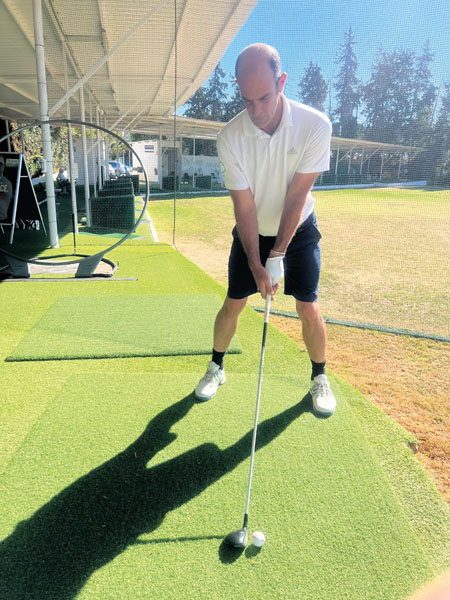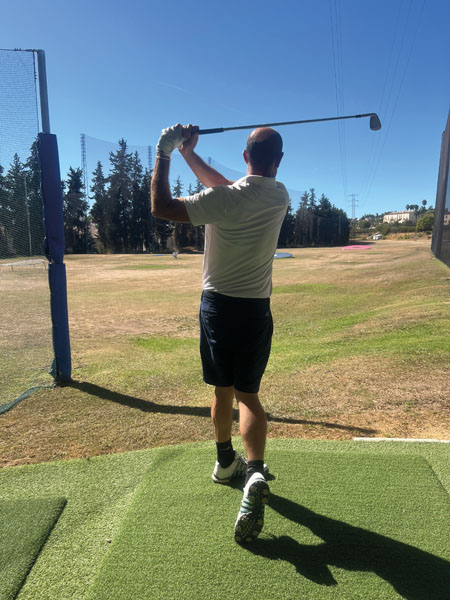The Range Marbella opened in 2022 and has seen a total transformation in its facilities in that time. The passion for golf of its instructors and its commitment to the latest, groundbreaking training technology have seen it become a real centre of excellence.
The Head
The head is a determining factor in maintaining balance and accuracy. Keeping our eyes on the ball during the rise of the club and up to the moment of impact, as a rule, will help us to maintain the position of the head.
We can use the chin as a reference so that, during the swing of the club, the turn of the shoulders passes underneath it, with the left shoulder below the chin on the rise and the right shoulder in the same position on impact with the ball.
Distances
The distance between the feet will help us to have a swing with the right amplitude, depending on the club we are using. Depending on the width of the hips we can play with most of the irons and taking the distance between the shoulders as a reference, the distance between the feet will be more suitable for the longer clubs: Driver, 3 wood and 5 wood.
*Between the feet and the ball: This distance will depend on the length of the shaft, being progressive from the shortest to the longest clubs.
The Finish
Despite being one of the most underrated positions of a good golf swing, there are a couple of fundamental aspects to bear in mind:
– Balance on the outstretched left leg.
– Position of the right leg: knee bent next to the left knee, with the toe of the right foot being the only point of contact with the ground.
It is advisable to return to the initial position of the shoulders while the arms go around the body and end at a suitable height, not below the shoulders or above the head.
Final execution of the swing or follow-through
Although the impact with the ball is the most critical moment of the swing, the follow-through reflects the quality of the stroke. A good follow-through is crucial to ensure that the energy generated during the swing is transferred efficiently to the ball for accuracy, power and control.
Practising the swing to full rotation with balance and arm extension will not only improve consistency, but also reduce the risk of injury by avoiding jerky or incomplete movements.
Steps to a good follow-through
- Maintain fluidity of movement
Follow-through begins after impact, but it should be naturally integrated throughout the swing. It is a mistake to stop the motion immediately after hitting the ball. The swing should continue smoothly, without interrupting the acceleration, allowing the body to complete the rotation and stabilise. This ensures that the energy has been transferred efficiently.
- Full body rotation
After impact, the body must continue to rotate towards the target. This involves the hips, torso and shoulders continuing to rotate so that the chest is pointing towards the target at the end of the swing. The hips should rotate fully, allowing the back foot (right foot for right-handed players) to rise and turn, staying on the tips of the toes.
- Extension of the arms
After striking the ball, the arms should continue to extend, maintaining the straight line created at impact. The lead arm (the left for right-handed golfers) should remain straight during the follow-through, which helps to maintain control and stability in the stroke.
- Weight on the front foot
At the end of the swing, most of the weight should be on the front foot. This ensures that a good transfer of weight has been made from the back foot to the front foot during the stroke, helping to generate power and balance.
- Balanced finishing position
A well-executed follow-through should end in a stable and balanced final position. The head should have turned towards the target and most of the weight should be on the left leg (for right-handed golfers). If you lose balance at the end, it is a sign that you did not make a balanced swing or that you did not control your energy properly.










